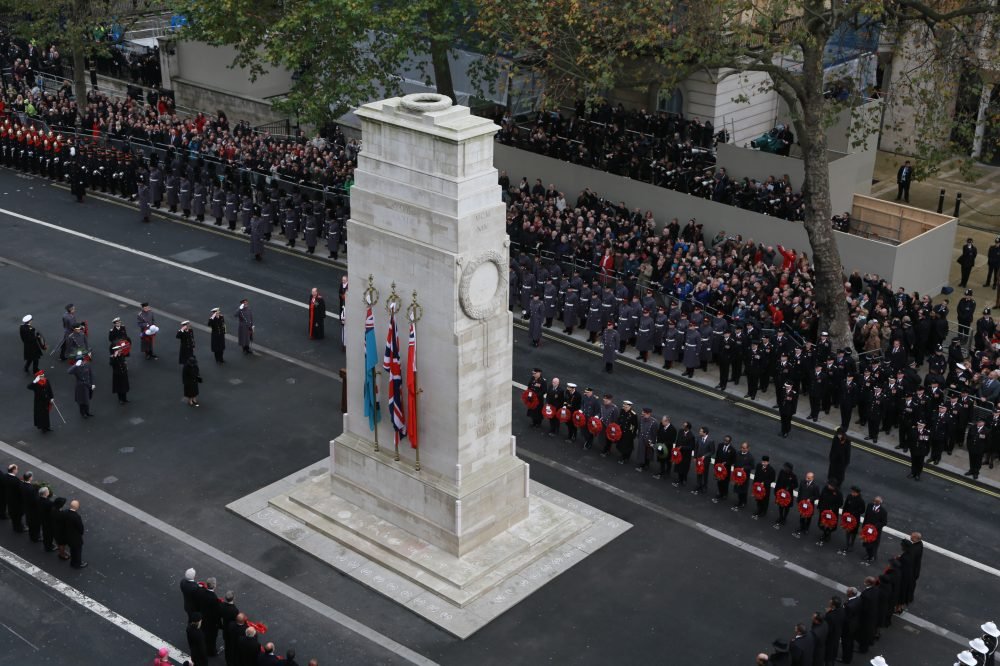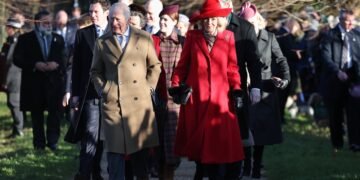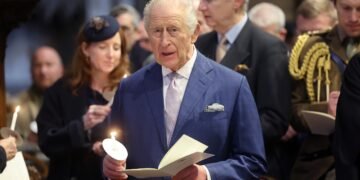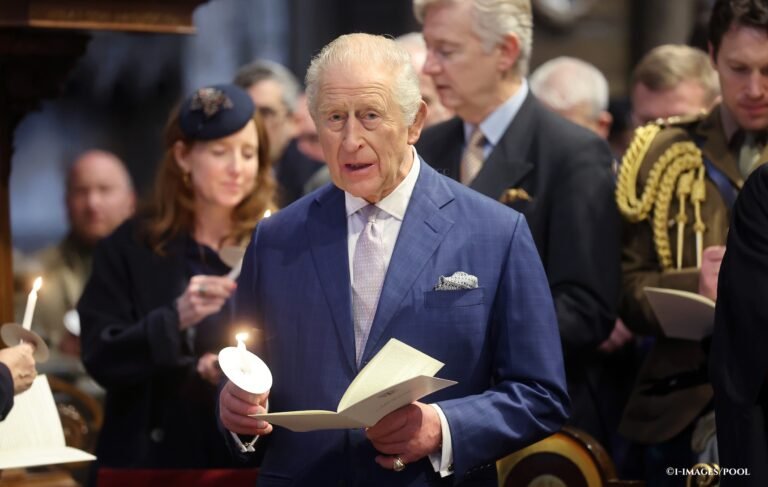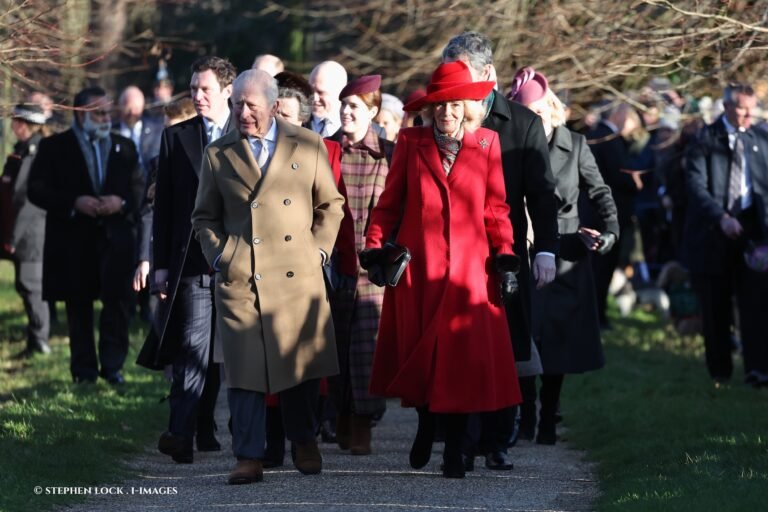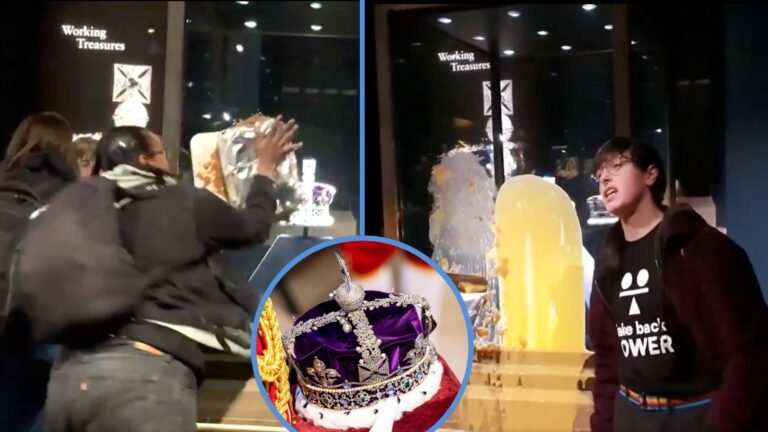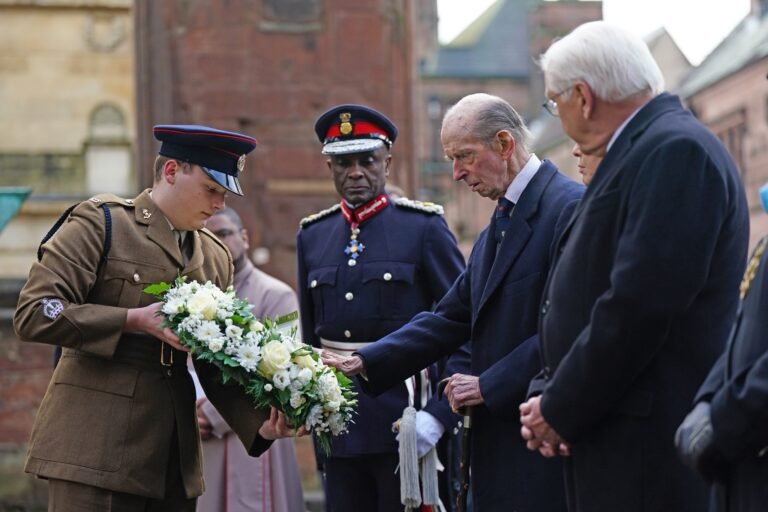Remembrance Sunday takes place this weekend, the day on which the nation comes together to commemorate the sacrifice made by British and Commonwealth military and civilian servicemen and women in the two World Wars and later conflicts.
Each year the focal point of the day is the National Service of Remembrance held at The Cenotaph in Whitehall, London.
The Queen will pay tribute alongside Members of the Cabinet, Opposition Party leaders, former Prime Ministers, the Mayor of London and other ministers. Representatives of the Armed Forces, Fishing Fleets and Merchant Air and Navy will be there, as well as faith communities and High Commissioners of Commonwealth countries.

It was announced last month that this year The Queen and Duke of Edinburgh will not be taking part in the ceremony as they normally do. Instead they will observe the proceedings at the Cenotaph from the balcony of the Foreign and Commonwealth Office, as The Prince of Wales lays the wreath on The Queen’s – and in turn the nation’s – behalf.
For keen royal watchers, this could mean that it is easier to spot Her Majesty this year, as she will be more easily viewed from the balcony than at street level.
Immediately following the National Service of Remembrance, there is a march past of veterans’ groups organised by the Royal British Legion with a member of the Royal Family taking the salute on Horse Guards Parade.
If you are planning on attending the event here is a guide to help you get the most out of the day.

Plan your journey & get there early
If you are planning on paying your respects on Whitehall itself, you will need to get there early in order to secure the best vantage point.
The service commences shortly before 11am when the dignitaries taking part in the service take their places around the Cenotaph in preparation for the two minutes’ silence at 11am.
Whitehall itself opens to the public at 8am. There are no passes or tickets, those wishing to observe simply turn up. This inevitably leads to queues forming early. Due to the nature of the event and the high ranking participants, security is very tight.
Plan your journey to Whitehall well in advance – many of the surrounding streets will cordoned off. If you can, use public transport. Access to Whitehall is from the Parliament Square end, for which the nearest London Underground station is Westminster.
You will need to pass through airport style security scanners and it is advised that you do not take suitcases or large bags with you. To secure the very best vantage point will probably entail joining the queue at around 7am.
Travel light & choose your vantage point
As already highlighted – the security advice is to turn up with as few personal belongings as possible. However, expect to be confined to Whitehall until at least 1pm. Temporary public toilets are located on Whitehall Place but crowds will be heavy and once you have found your viewing spot you will find it difficult to venture far from it.
To have any chance of seeing members of the Royal Family and other dignitaries, you will need to be in the immediate vicinity of the Cenotaph on the eastern side of Whitehall. Barriers line the pavements and once you have chosen which side of Whitehall you want to occupy it is not possible to move to the other side without exiting at the top of Whitehall and re-entering again.
Dignitaries enter Whitehall from the Foreign and Commonwealth building which is located on the western side – and this is side of the road where the march past takes place – however the area closest to the Cenotaph on this side is reserved for specially invited guests.
In front of each barrier are police officers placed a few yards apart for security reasons, and in front of them will be three ranks of service men and women from the military or emergency services, who form part of the parade.
Space is available for wheelchair users and other spectators who might find it difficult to view from the general public areas. This area is located on the west side of Parliament Street, close to the junction with King Charles Street. Space in this enclosure is offered on a first-come, first-served basis only. One carer or guest per person will also be admitted and a toilet for the use of disabled people will be available nearby.
For those wanting to make sure they see as much as possible, there will be video screens north of the Cenotaph, near the green outside the main Ministry of Defence building, mounted outside the Scotland Office and another on the roadway.
A moving spectacle but can be a long day
There is plenty to see before 11am as the parade participants march into position dressed in their ceremonial uniforms, and from around 10.30am the Massed Bands of the Household Division begin to play beautiful, if mournful and moving musical pieces.
The Service of Remembrance begins at 11am prompt – with the chimes of Big Ben echoing down Whitehall, which have been silent for 11 weeks, due to the renovation work being carried out on Elizabeth Tower, in which the famous clock bell is housed.
Upon the strike of 11 the assembled dignitaries lead the entire nation in a two minute silence, held to remember the fallen of the two world wars and later conflicts. The silence is to be strictly observed. The respectful and reverential mood is heightened by the sense of complete silence in the heart of our capital city. No photographs should be taken during it, or the religious service that follows.
The two minute silence ends with buglers from the Royal Marines sounding the last post, followed by Royal Air Force buglers playing reveille.
Wreaths are then laid at the foot of The Cenotaph led, this year, by the Prince of Wales.
A short religious service with hymn singing and prayers follows the wreath laying. Leaders of all major religious denominations are represented, to reflect the diverse backgrounds of those who have served and fallen.
Naturally, these parts of the ceremony should be respectfully observed. Boy Scouts hand out Orders of Service to spectators for them to be able to follow the service and join the hymn singing.
The National Service of Remembrance concludes at around 11:20am and shortly after, the Royal British Legion march past commences. Expect this to take approximately one hour.
Expect rousing tunes from the Massed Bands of the Household Division – albeit played to the slow match – the old campaigners may not march as quickly as they used to, but of all the days in the year this is the one when they march in step, shoulders back, chest out, as they ‘eyes left’ past The Cenotaph, medals gleaming and a glint in the eye, as they proudly honour lost comrades and pals. The loudest cheers usually go to the Chelsea Pensioners from the Royal Hospital – resplendent in their scarlet coats.
Each year a different veterans organisation has the distinction of leading the parade. Participation in the march past can only be organised through a local branch of the Royal British Legion.
At the conclusion of the march past, the Salvation Army hold their own Service of Remembrance, during which spectators are not permitted out of the Whitehall cordoned area. This service will conclude at around 1pm. At this point gateways are opened up in the barriers and spectators are permitted to make their way safely away from Whitehall.
Barriers are erected around The Cenotaph to allow the public to view the hundreds of wreaths that have been laid during the morning’s commemoration.
By this point in time, you may well have been stood in the same spot for up to five hours, so make sure you dress appropriately for the weather and wear comfortable footwear.
It can be a long day, but the opportunity to be at the heart of the nation’s remembrance and participate in this deeply moving occasion, honouring the men and women who made the ultimate sacrifice is an experience that many could not miss and return to year after year.
The National Service of Remembrance will also be broadcast live on BBC1 on Sunday at 10.20am with a highlights programme on BBC2 at 6pm.

